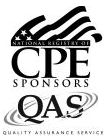Retail Management (CPE Course)
Related Courses
CPE Credit: 14 hours
Course Type: Downloaded PDF materials with online test
Price (with PDF Textbook): $100
Course Description
In the Retail Management course, we address every aspect of the management of a retail business, including strategic planning, how to determine the best store locations, merchandise optimization, and price setting. The course also addresses the organizational structure of a retailer, which promotions to employ, and how to measure financial and operational results. In short, this course is intended to be the go-to guide for anyone who wants to start up a retail business or improve the operations of an existing one.
Author: Steven Bragg
Course Number: BM1017
Table of Contents
Chapter 1. Introduction to Retailing
Chapter 2. Customer Relationships
Chapter 3. Strategic Planning
Chapter 4. Types of Retail Establishments
Chapter 5. Customer Identification
Chapter 6. Location Planning
Chapter 7. The Organization of a Retailer
Chapter 8. Retailer Financial Planning
Chapter 9. Retailer Operations Management
Chapter 10. Merchandise Management
Chapter 11. Merchandise Control
Chapter 12. Pricing Strategy
Chapter 13. The Shopping Experience
Chapter 14. Retailer Promotions
Chapter 15. Retailer Marketing
Chapter 16. Retailer Ethics
Chapter 17. Retailer Metrics
Learning Objectives
Identify the elements of a seamless shopping experience.
Specify the requirements of an omnichannel retailing system.
Describe the tactics that can be used to increase retail sales.
Identify the aspects of an enhanced level of customer service.
Specify the requirements for a retailer’s vision statement.
Identify the trade-offs involved in developing a strategic plan.
Recall the different types of retailer strategies.
Specify how to simplify and implement a strategy.
Describe the characteristics, advantages, and disadvantages of the different types of business organization.
Specify when to use scrambled merchandising.
Specify how the different types of retailers conduct their operations.
Recall how outshopping applies to a retailer’s strategy.
Recall how shopper attitudes towards a retailer can be enhanced.
Specify how to minimize customer dissatisfaction with purchased goods.
Identify the different research methods used to investigate strategic options.
Recall the most rigid element of a retailer’s strategy.
Recall the steps used to find an appropriate store location.
Specify how an organizational structure can benefit a retailer.
Identify how a job analysis and a job description can be used.
Recall the methods used by a retailer to search for job candidates, and the benefits of each one.
Specify the advantages of requiring candidates to complete a job application form.
Identify the best practices for reviewing job applications and resumes.
Recall the reasons why retailers use job interviews.
Specify the red flags to watch out for when reviewing a job candidate’s references.
Identify the different types of employee training.
Recall the format and uses of each of the financial statements.
Specify the general methods used to drive down costs within a retailer.
Identify the goals of a system of inventory management.
Recall the maintenance issues that store managers must deal with.
Specify the advantages of using a standardized store layout.
Recall the nature of Little’s Law.
Specify the various viewpoints on how to organize the buying and selling functions.
Identify the problems encountered when sourcing from foreign suppliers.
State the nature of slotting fees.
Recall the circumstances under which floor-ready merchandise is used.
Specify the various transport options for goods, and when each one works best.
Identify the advantages and disadvantages of a direct store delivery system.
Recall the different types of deductions that a retailer might take from its supplier payments.
Specify the different types of inventory system that a retailer might use.
Identify how to calculate the retail method for estimating ending inventory.
Recall the methods for managing markdowns.
Specify the different types of sales forecasting methods used by retailers.
Identify when different types of pricing strategies should be used.
Recall the characteristics of a well-designed storefront, interior, and layout for a store.
Specify the different types of sales promotions.
Identify the advantages and disadvantages of direct marketing.
Recall the reasons why profits tend to be elevated over the requirements of other stakeholders.
Specify the various metrics that can be applied to a retail operation, and their characteristics.
Level: Overview
Instructional Method: QAS Self-Study
NASBA Category: Business Management & Organization
Prerequisites: None
Advance Preparation: None
Latest Review Date: December 2024
Program Registration Requirements: Click on "Purchase Course" near the top of this page to pay for and access the course. You will then be able to download the course as a PDF file, then take an on-line examination, and then download a certificate of completion if you pass the examination.
Program Refund Policy: For more information regarding administrative policies concerning complaints, refunds, and other matters, see our policies page.
AccountingTools, Inc. is registered with the National Association of State Boards of Accountancy (NASBA) as a sponsor of continuing professional education on the National Registry of CPE Sponsors. State boards of accountancy have the final authority on the acceptance of individual courses for CPE credit. Complaints regarding registered sponsors may be submitted to the National Registry of CPE Sponsors through its website: www.nasbaregistry.org.
The NASBA sponsor identification number for Accountingtools, Inc. is 115881.
AccountingTools is an IRS Approved Continuing Education Provider. We are compliant with the requirements for continuing education providers (as described in sections 10.6 and 10.9 of the Department of Treasury’s Circular No. 230 and in other IRS guidance, forms, and instructions). Our IRS Approved Continuing Education Provider number is 72821.


